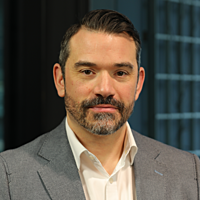Last year's Sohn picks returned 38%. Here are the 9 new ideas from this year's conference
Celebrating its 10th anniversary on Friday, the Sohn Hearts and Minds Conference put on a fantastic show which deftly weaved together finance, health, business, innovation, research and politics – and was punctuated by a high-energy closing set from two members of the Hoodoo Gurus.
This edition of the conference, which has raised more than $80 million for Australian medical research over the past decade via the listed vehicle HM1, featured sessions including former Australian Prime Minister Julia Gillard being interviewed by David Gonski, a speech from current Federal Treasurer Jim Chalmers, and a macro panel session hosted by Munro Partners' Nick Griffin.
And whilst former Trump advisor and White House communications director (for all of two weeks) Anthony “The Mooch” Scaramucci was probably the most popular speaker of the day, due to his behind-the-scenes insights and honest appraisal of both his own and Trump’s performances, the stock picking remains the heartbeat of Sohn.
The picks below, as is the case for the stocks presented at each year’s conference, comprise 35% of the HM1 portfolio for a 12-month period. The rest of the portfolio is invested in high-conviction ideas from Sohn’s own fund managers. Last year’s picks delivered an average return of 38%.
The picks below are presented in the order of the speakers' appearances on the day.
#1 - Morimatsu International – Eric Wong | Stillpoint Investments

What it does: Morimatsu (HKG: 2155) is a leading global provider of core equipment, process systems, and smart factory solutions. The business encompasses the design, manufacturing, installation, and operation and maintenance of core equipment, process systems (such as process modules), and overall solutions (such as modular industrial units) for chemical, biological, and polymerization reactions.

Why Wong likes it: Wong describes Morimatsu as a factory of factories, quietly powering America’s manufacturing resurgence. He notes that the company sells factories in a box for medicines, EV, battery materials and chemicals. And not just equipment, but entire production lines, which are prefabricated and tested in China, put in containers and shipped anywhere in the world. "You can think of it as a life-size Lego set", said Wong.
He adds that Morimatsu combines Japanese precision with Chinese execution, which has seen profitability soar;
“In 2018, net margin wasn’t even 5%, and today its 13%. We believe Morimatsu is undiscovered and mispriced.”
#2 – Steel Dynamics – Peter Rutter | Life Cycle Investment Partners

What it does: Steel Dynamics (NASDAQ: STLD) is one of the largest steel producers in the US, operating a network of electric-arc-furnace mini-mills and value-added flat-rolled and long-product facilities with around 16 million tonnes of shipping capacity. It recycles local scrap into steel for autos, construction, energy and manufacturing, and is expanding into recycled aluminium flat-rolled products to serve EVs, cans and industrial customers. The company generated US$17.5 billion of revenue in 2024 and is known for a low-cost, highly variable cost base and industry-leading returns on capital.
Why Rutter likes it: Rutter sees Steel Dynamics as a “neglected value and hidden change” story built on culture and under-appreciated earnings power. He highlights an entrepreneurial, non-union culture where “everybody from the receptionist to the chief engineer is paid a monthly cash bonus depending on the performance of the mill”, creating an “amazing collective spirit” and world-leading margins.
He argues the market is missing three catalysts: an underperforming new mill in Sinton, Texas, which is now hitting an inflection point; a huge new recycled aluminium operation ramping into a domestic supply squeeze; and a steel cycle turning as inventories of cheap imports are worked down. On his numbers, these pillars could underpin “at least a 150% increase in profits over the next 12 to 18 months” and a similar move in the share price as US re-industrialisation plays out.
#3 – TKO Group – Qiao Ma | Munro Partners
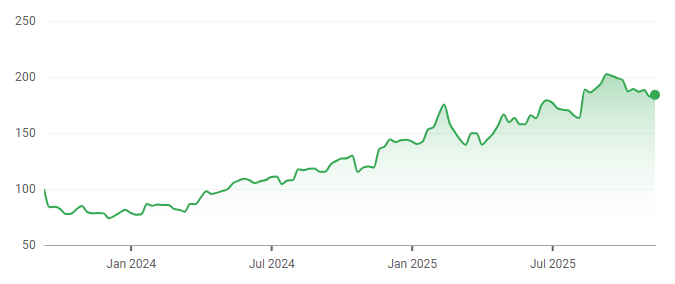
What it does: TKO Group (NYSE: TKO) owns some of the most valuable combat sports IP on the planet: UFC, WWE and Professional Bull Riders. Together, they stage more than 500 live events a year, reach around 1 billion households across 210 countries, and monetise through media rights, pay-per-view and streaming, ticketing, sponsorship, licensing, and hospitality. Recent deals include a seven-year, US$7.7 billion agreement that will make Paramount+ the exclusive US home of UFC events from 2026, sharply expanding reach and embedding UFC deeper into the direct-to-consumer streaming ecosystem.
Why Qiao likes it: Qiao likes TKO for three simple reasons:
“It produces some of the most unique, one-of-a-kind content; it makes a lot of money, profitably and sustainably, from this content; and as a stock, it is still undiscovered.”
She argues UFC and WWE sit in the sweet spot between live sport and scripted entertainment – curated match-ups and choreographed drama that “guarantee excitement” and can run year-round, anywhere in the world. That makes their rights “perfect for TV networks and streaming platforms,” and rights fees have historically roughly doubled at each renewal cycle.
She highlights TKO’s vertically integrated model - owning the brands, fighters, events, distribution and licensing - as an “interconnected flywheel” that locks in the best talent and underpins EBITDA margins in the mid-30s and free cash flow compounding north of 15% a year. Yet, as she notes, “there are 700 million UFC fans around the world, but only five Wall Street analysts cover the stock,” leaving investors able to buy what she calls a “cashflow machine” on roughly 17 times EBITDA.
#4 – monday.com – Ben Hensman | Square Peg

What it does: monday.com (NASDAQ: MNDY) is an AI-enabled “work operating system” that lets teams build their own workflows using no-code building blocks – “like digital Lego” – rather than forcing people into rigid, legacy software. Its platform underpins project management, CRM, marketing, product development and service workflows for more than 200,000–250,000 customers across some 200 industries, from tech to manufacturing and healthcare. The company sells a suite of products (Work Management, CRM, Dev, Service and Campaigns) on a SaaS model and has been delivering high-twenties revenue growth with healthy free cash flow margins, consistently hitting “Rule of 60” territory.
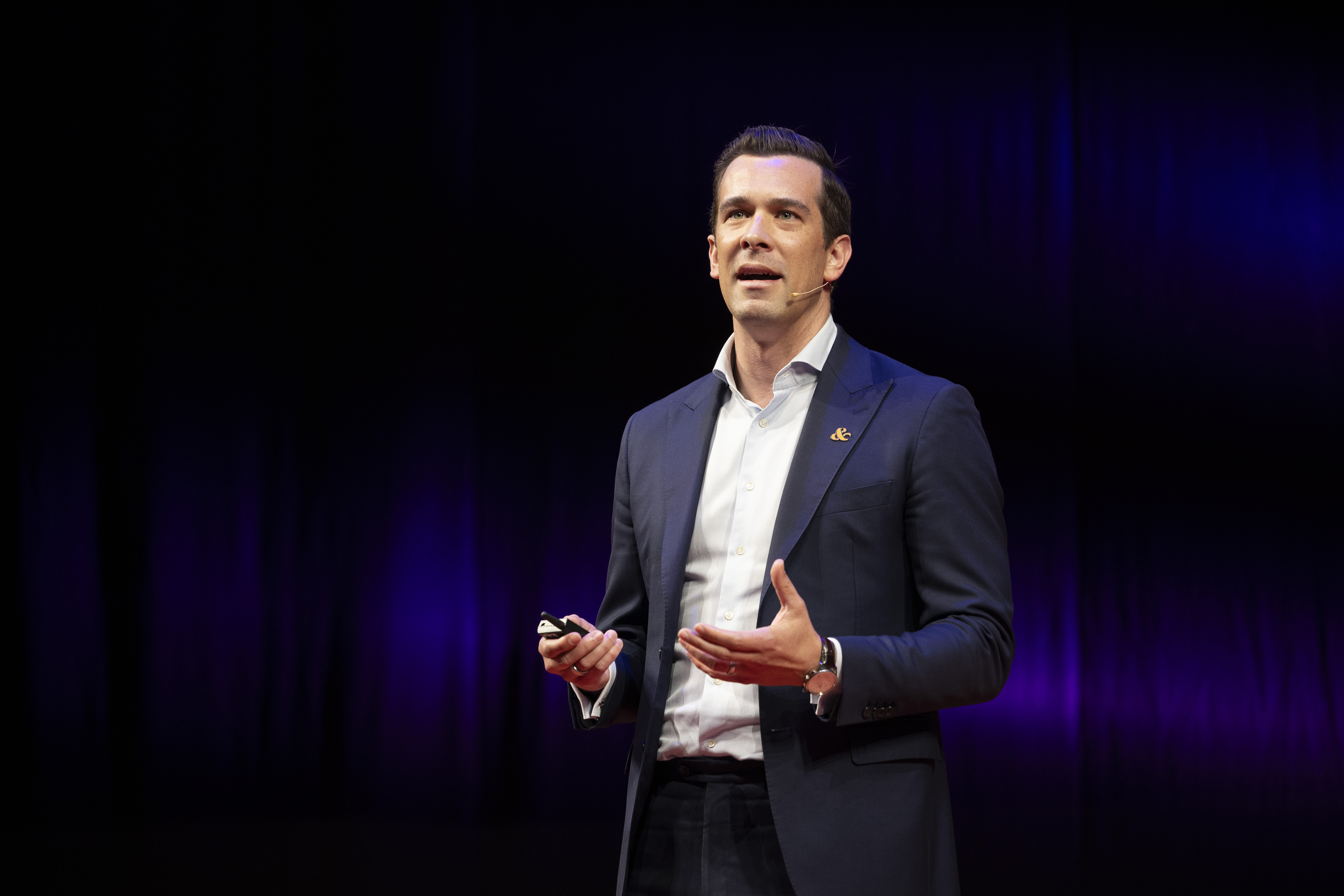
Why Hensman likes it: Hensman frames monday as the “control tower for cross-functional work” in a world drowning in email, chat and meetings. He notes that by giving teams the tools to snap together their own workflows and automate low-value steps, “software stops just tracking the work and starts doing the work.”
A case study with Canva, consolidating a fragmented marketing process, automating 650 steps and cutting production times by 40% while tripling creative output, demonstrates the operating leverage he believes can play out across the customer base.
He points to two powerful growth levers: expanding within large accounts, where big customers have tripled in three years and enjoy net dollar retention close to 120%, and cross-selling new products like CRM and Dev, which already contribute a rising share of ARR. With AI agents now embedded into the platform and customer usage ramping quickly, he argues monday is one of the few application-software names where AI is a clear accelerator rather than a threat. And yet it trades at roughly five times revenue and about 16 times forward free cash flow, levels he calls “the best value since its IPO”, while the company buys back 10% of its own market cap.
#5 – Puuilo – Emerson Moore | Ampfield Management

What it does: Puuilo Oyj (HEL: PUUILO) is a Finnish discount retailer focused on DIY, tools, home maintenance and everyday consumables. Think smaller baskets of low-ticket, non-cyclical items – everything you need for “do-it-yourself maintenance projects and recurring household needs” rather than big-ticket lumber or building materials. The chain has grown to dozens of stores across Finland (with expansion into Sweden underway), generates high sales per square metre versus peers and enjoys strong EBIT margins supported by tight cost control and private-label penetration. New stores are relatively cheap to open, giving Puuilo one of the most attractive unit economics profiles in European value retail.
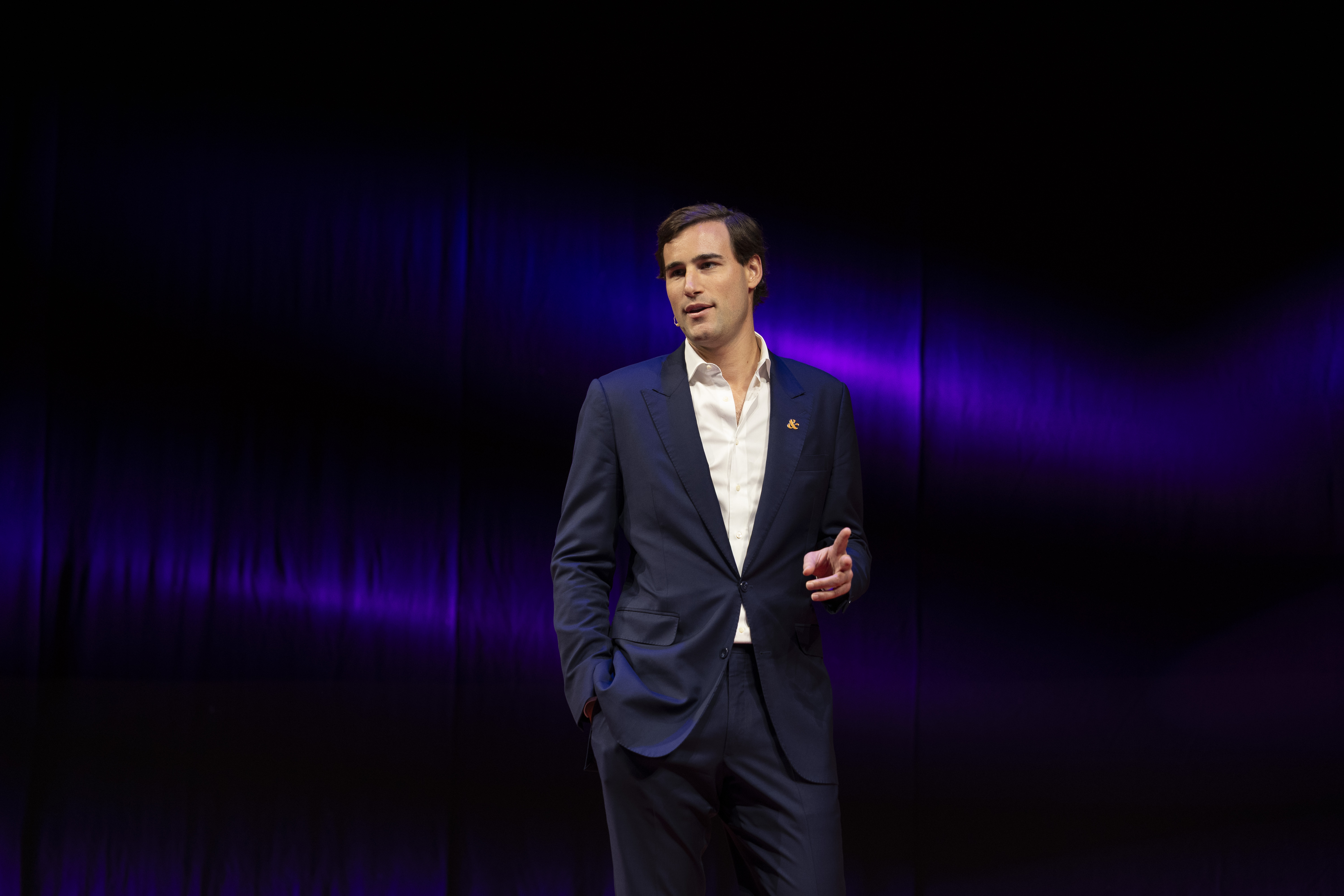
Why Moore likes it:
Moore calls Puuilo “what happens if Bunnings, IKEA and a very sensible Finnish person had a child."
He is drawn to its ability to recycle cash into new stores at extraordinary rates. On his numbers, each new store requires about €1.6 million of capital (including inventory) and delivers roughly €1.5 million of operating profit at maturity, equating to “mid-sixties pre-tax IRRs” even after depreciation and corporate overhead. He and his team web-scraped 1.4 million SKUs and found Puuilo offers the broadest assortment and systematically lower prices - competitors typically charge around 15% more - which helps drive very high sales per metre. Demographic work suggests the Finnish market alone can support at least 90 stores, with optional upside from international roll-out. With the company historically growing operating earnings more than 20% per year while paying out around 80% of profits as dividends, Moore sees a path to “20% annualised, constant-multiple shareholder returns” driven by low-teens store growth, modest same-store growth, rising private label and the optional kicker of a successful Sweden entry.
#6 – PB Fintech – Samir Mehta | J O Hambro

What it does: PB Fintech (NSE: POLICYBZR) is the parent of Policybazaar and Paisabazaar, India’s leading online marketplaces for insurance and retail credit. Policybazaar aggregates and compares health, life, motor and other insurance products from dozens of insurers, while Paisabazaar plays a similar role in personal loans and credit cards. The platform has over 50 million registered customers. In its core insurance business, PB Fintech has grown revenue at roughly 40–50% annually in recent years and, after years of investment, now generates positive cash flow as renewal income scales - renewal cohorts carry operating margins of around 80%.
Why Mehta likes it: Mehta situates PB Fintech at the heart of three compounding trends in India: financialisation of savings, under-penetration of insurance and the rise of a digital-savvy middle class.
“The penetration of life insurance in India is just miniscule,” he notes, and points to a healthcare protection gap where “close to two-thirds of all healthcare by Indians is still paying out cash.”
Policybazaar already serves the equivalent of four times Australia’s population in active insurance customers and has 20 million transactors, yet the market remains largely untapped. He emphasises the visibility of growth from policy renewals: once a customer renews into year two, PB Fintech earns “close to 80% operating margins,” making future revenues and profits highly predictable over the next three to five years. He also highlights how the company is using AI and data – from face and voice recognition to claims support centres in 200 cities – to reduce fraud, improve the claims experience, and deepen customer trust.
On his risk-reward work, Mehta sees around 60% upside in his base case versus mid-teens downside, which he characterises as a “good risk-adjusted result” for a dominant marketplace leveraged to India’s structural savings shift.
#7 – Brookdale Senior Living – Vihari Ross | Antipodes Partners
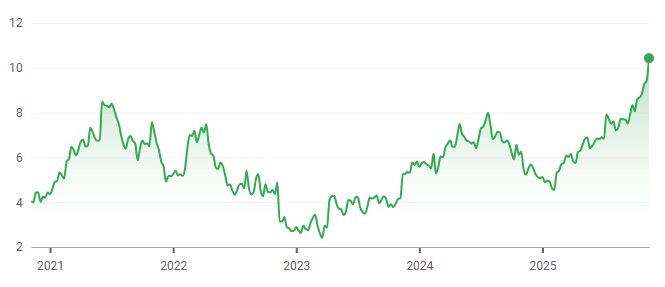
What it does: Brookdale Senior Living (NYSE: BKD) is the largest operator of senior housing in the United States, with more than 670 communities across 41 states offering independent living, assisted living, memory care and skilled nursing. It provides essential services – accommodation, care and social infrastructure – to older Americans, particularly the wealthiest cohorts of the ageing baby boomer generation. After a difficult decade of oversupply and then COVID-era occupancy collapses, Brookdale is now benefiting from improving occupancy, rising rates and operational leverage. Recent updates show occupancy rising back into the low-80s and net operating income recovering strongly off depressed levels.
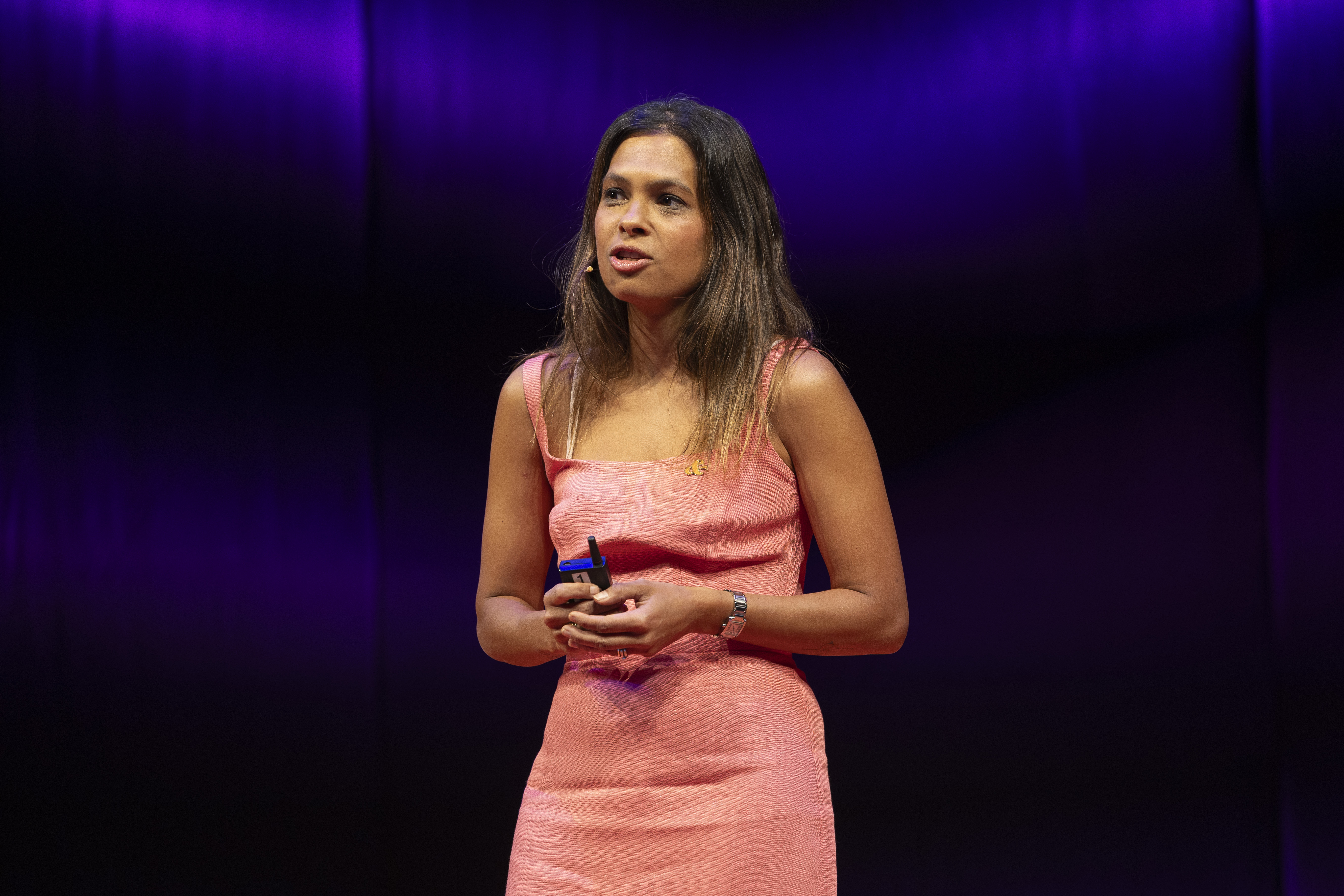
Why Ross likes it: Ross pitches Brookdale as a classic inflection story tied to a powerful demographic wave.
With baby boomers now starting to turn 80, she notes that the over-80 population is set to double over the coming decades, yet new senior-housing construction in the US has collapsed around 90% from its peak, leaving “a huge undersupply at exactly the moment demand is surging.” In this model, the key driver is “occupancy, occupancy, occupancy.”
Brookdale earns extremely high incremental margins on each additional resident. For example, moving from 89 to 90 residents in a 100-bed facility carries almost no extra cost, so Antipodes is modelling incremental margins of 80–90% as occupancy grinds higher. At the same time, constrained supply gives Brookdale pricing power: Ross expects income per bed to jump from around US$15,000 to closer to US$45,000 as wealthier boomers pay for higher-quality care.
On her numbers, that could see revenues up 1.5 times and operating income triple over three to five years, while net debt to EBITDA falls sharply as free cash flow inflects. She also argues the market is misreading the debt profile - “it is mortgage debt, paid by the rents the residents pay” - and notes that Brookdale trades at about half replacement cost per bed and at a steep discount to listed REIT peers, offering multi-bagger potential if the thesis plays out.
#8 – SLB – Robert Mullin | Marathon Resource Advisors

What it does: SLB (NYSE: SLB) (formerly Schlumberger) is a 100-year-old global energy technology company and the world’s largest oilfield services provider. It supplies hardware, software and integrated solutions across the lifecycle of oil, gas and increasingly low-carbon projects, from subsurface imaging and drilling to completions, production, carbon capture and geothermal. It has also built a sizeable digital business, SLB Digital, which is now generating roughly US$3 billion of annual revenue with targeted EBITDA margins of about 35%, leveraging decades of proprietary subsurface data and software into high-margin AI-driven services.
Why Mullin likes it:
Mullin describes SLB as “a new-economy champion hiding beneath an old-economy wrap."
He notes SLB is a technology company leveraged to the resurgence of global energy investment and the power needs of AI data centres. After a decade-long capex bust, current oil and gas spending is “simply not enough” to meet projected demand, even on conservative energy-transition scenarios, and that the locus of growth is shifting from US shale – SLB’s weakest market – to large, technically complex offshore and LNG projects in Brazil, Guyana, the Middle East and Asia, “which is SLB’s sweet spot.”
On the numbers, the company is generating strong free cash flow (US$1.1 billion in Q3 alone) and returning close to 10% of its market cap in buybacks and dividends this year, yet trades on roughly 12 times trough earnings versus a long-term history of commanding a premium to the S&P 500. The real kicker, he argues, is SLB Digital – effectively a “chatbot for the energy industry” built on proprietary data and AI – which he believes could ultimately justify a tech-style valuation multiple on its own. In his blue-sky scenario, a modest re-rating plus normalised spending could see the stock “well into the hundreds”, giving SLB both “roots and wings”.
#9 – Heidelberg Materials – Mohammed Anjarwala | Advent International
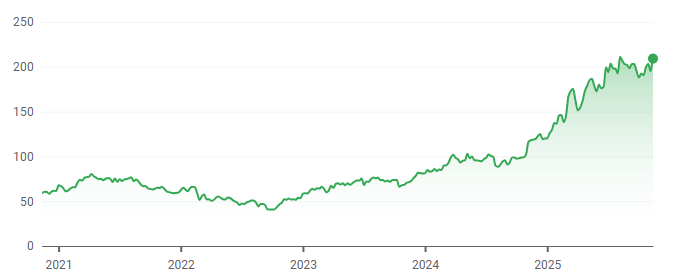
What it does: Heidelberg Materials (ETR: HEI) is one of the world’s largest integrated cement and aggregates groups, with around 3,000 sites across 50 countries and a particularly strong footprint in Europe and Germany. It supplies cement, aggregates, ready-mixed concrete and asphalt – the basic ingredients of infrastructure, housing, industrial and data-centre construction. Despite weak volumes, the company has grown its results from current operations to a record €3.2 billion in 2024 on flat revenue of €21.2 billion, lifting margins via pricing discipline and cost efficiency. It is also a pioneer in low-carbon cement: its Brevik plant in Norway is launching evoZero, the world’s first carbon-captured net-zero cement, with the initial 2025 output already sold out.
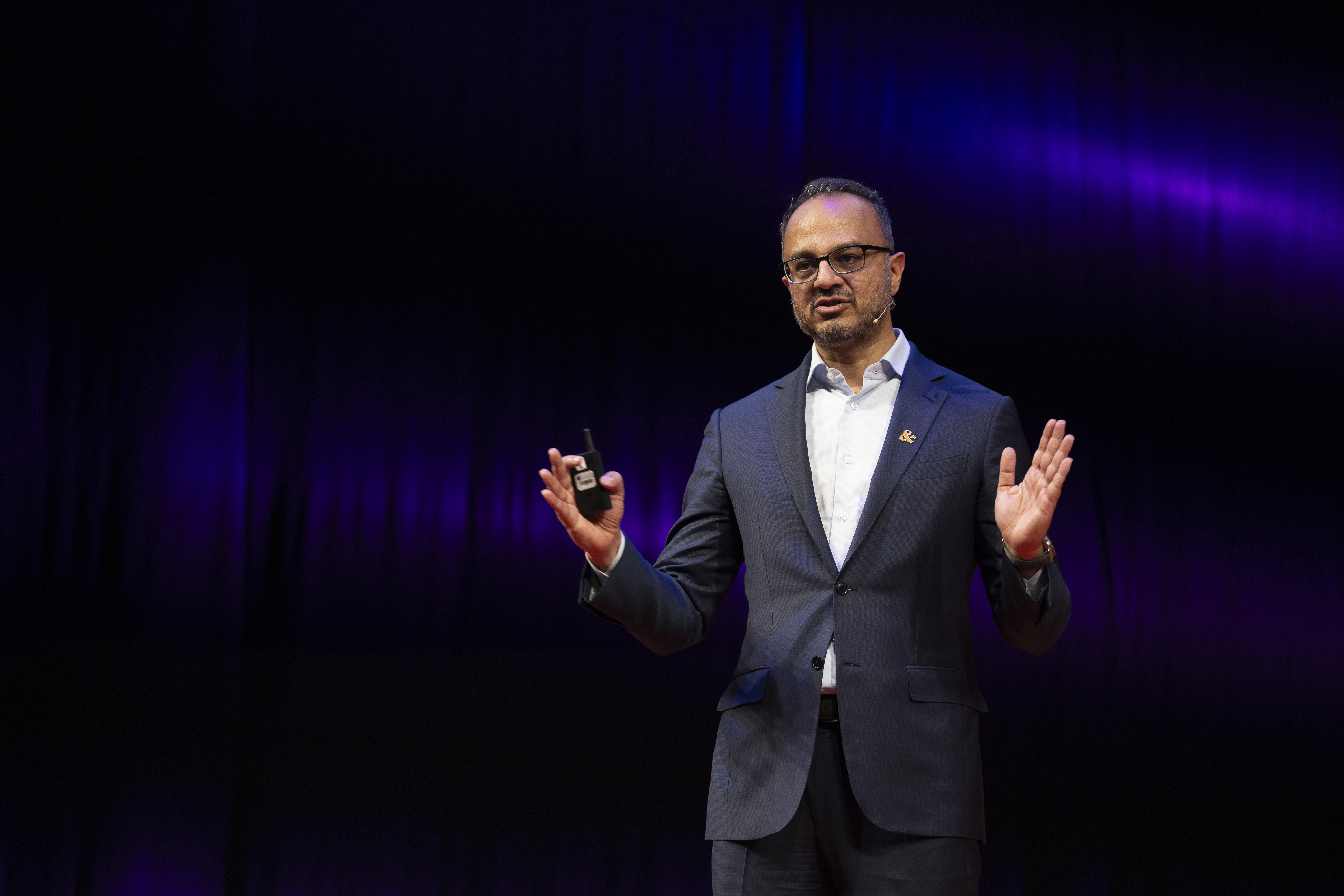
Why Anjarwala likes it:
Anjarwala pitches Heidelberg as “the best way to invest behind the growing resurgence of European fiscal spending on infrastructure,” particularly Germany’s shift from a constitutional debt brake to a multi-year stimulus program.
He points to a €500 billion German special infrastructure fund to be spent over 12 years, plus a step-up in defence and “defence-adjacent” projects such as bunkers and missile silos – all heavy users of cement and aggregates. Heidelberg, with about 20% share nationally but often over 50% in local markets, operates what he calls “local monopolies” with real pricing power: over five years, European volumes fell roughly 20% while revenues rose 25% and earnings 70%, thanks to price increases and footprint rationalisation. Because the European network is only 50–70% utilised, he argues new volumes can be absorbed with minimal capex, driving very high incremental margins.
On his base case, earnings per share almost double from just under €13 to about €24 over three years, while a re-rating from 12 to 15 times and roughly €20 of cumulative dividends could deliver close to a 2x return, with further upside from zero-carbon products and any eventual Ukraine rebuild.
5 topics
4 stocks mentioned
